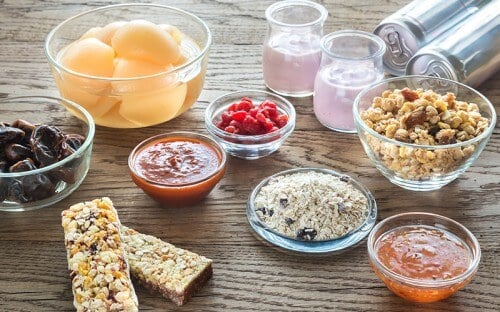It’s no mystery that most kids love sugar. However, the bacteria in their mouths love it even more. Bacteria “eat” sugar and the acid waste they leave behind wears away the enamel of your child’s teeth, causing tooth decay.
One of the easiest ways to reduce the risk of your child developing tooth decay is to reduce the amount of added sugar they eat. Not only is limiting their sugar intake good for their teeth, but it can also help prevent childhood obesity and lower their risk of developing type 2 diabetes.
HOW MUCH IS TOO MUCH?

The U.S. Food and Drug Administration takes a rather lenient approach to sugar consumption. They recommend that people ages three and older should consume no more than 12 tsp. each day of sugar, while the World Health Organization conservatively suggests children have no more than three teaspoons per day.
Considering a can of soda often has between 9 and 12 teaspoons per 12-oz. can, you can see how easy it is for children to get more than their fill of sugar daily.
While the U.S. still uses the teaspoon to measure volume in cooking, most food manufacturers list their ingredients in grams. One teaspoon of sugar equals about four grams. So, using grams, your child’s recommended daily allowance of sugar should be between 10-50 grams per day.
HIDDEN SUGARS
As consumers become more health conscience and savvier shoppers, food manufacturers have become trickier with labeling added sugars in their products. Many have adopted more healthy-sounding names for the sweeteners they add to their products. Names like beet sugar, barley malt, and cane sugar can make parents think that a product is more natural and, therefore, healthy. But, in fact, some “healthy” foods have as much added sugar as a candy bar. Even names like dextrose and maltodextrin are just clever ways of saying sugar.
Juices, once thought to be a healthy choice for children, can have as much sugar as a can of soda. The American Academy of Pediatrics suggests that children ages 1-6 should have no more than 4-6 oz. and children ages 7 and up should drink no more than 8-12 oz. daily. Considering the average juice box is about 6 oz., that really puts into perspective how little juice your child should have.

Dried fruits are another hidden source of sugar. While most don’t have added sugar, the drying process concentrates the sugars that are naturally present. Sticky dried foods like raisins make it more difficult to get sugar off your teeth.
Seemingly innocent food like bread, crackers, and cereal also contain added sugars and other processed ingredients.
SHOW YOUR CHILD HOW TO MAKE HEALTHY CHOICES
One of the best ways to help your child make smart choices is to lead by example. Show your child how simple and delicious it is to eat whole, unprocessed foods. Shop around the perimeter of the store, choose fresh produce, meats, and dairy over-processed foods typically found in the middle aisles. Instead of juice or sports drinks, offer water or milk. Whole fruits and berries also provide vital nutrients and fiber that their juice counterparts don’t have. Instead of fruit snacks or crackers, unflavored Greek yogurt supplies protein and calcium for strong bones and muscle development.
Give your child some control in their new eating habits by offering them a choice between two smart options. Allowing your child to help with the shopping lets them feel like they get a say in their new eating habits and they also learn how to make smart choices they can carry with them through adolescence and into adulthood.



